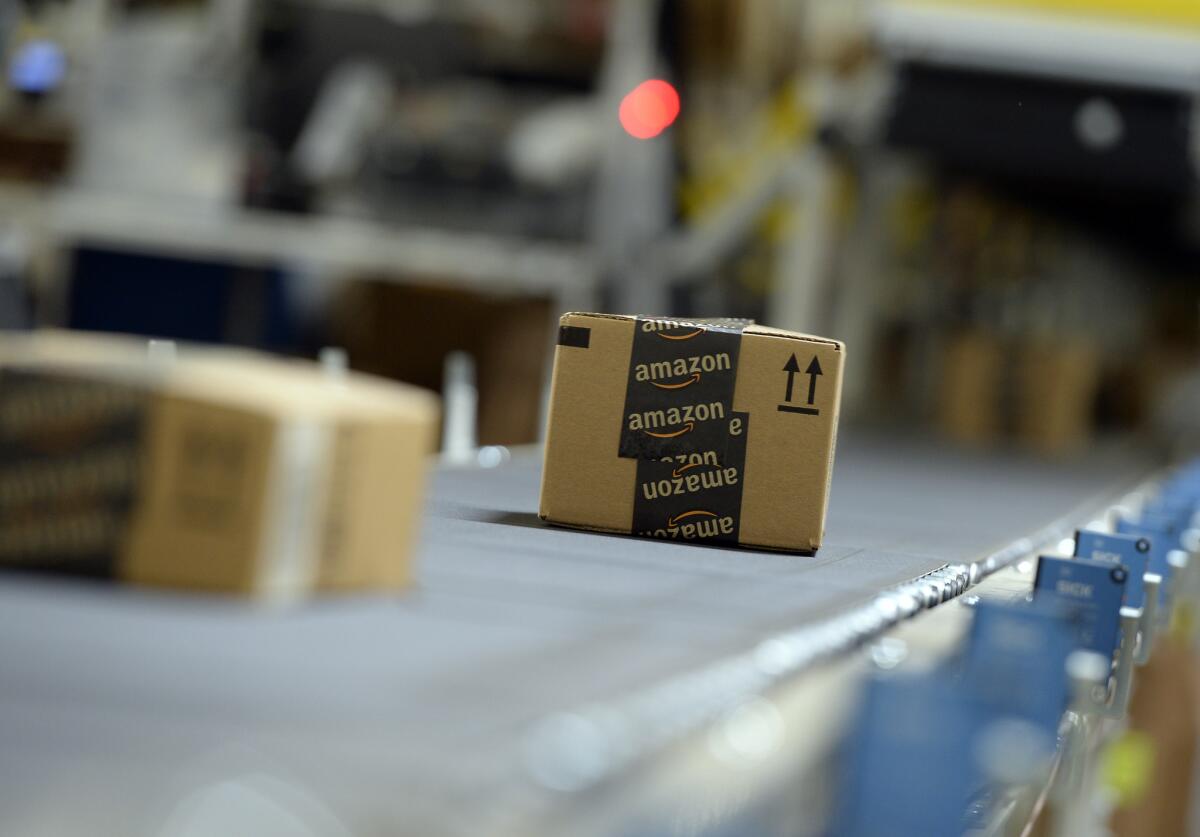Amazon says Prime Day sales jumped 60% as it welcomes many new subscribers

Amazon.com Inc. said shoppers flocked to Prime Day — its self-proclaimed retail holiday for Prime subscription members — at an unprecedented rate this week, driven in large part by widespread demand for devices manufactured by the e-commerce giant.
Amazon didn’t disclose a dollar figure, but it said sales grew 60% over last year’s Prime Day. It also said that on Tuesday, more people joined Prime, its $99-a-year loyalty program, than on any other single day in company history.
The third incarnation of the annual summer discount extravaganza was extra-long — 30 hours instead of 24, starting Monday at 6 p.m. PDT. And Prime Day was available in 13 countries this year, adding Mexico, China and India for the first time.
Amazon said its Echo Dot, a voice-activated speaker and digital assistant, was the bestselling item globally. The Seattle company said it sold seven times as many Echo devices, in various versions, as on Prime Day 2016.
Other hot sellers in the U.S. were Amazon Fire tablets, genetic tests from 23andMe and an Instant Pot programmable pressure cooker.
The first Prime Day was held in 2015, a Cyber Monday-like shopping event meant to encourage enrollment in the Prime loyalty program, which includes free shipping and other perks. Analysts say it may have brought in as much as $400 million in extra revenue.
Last year’s incarnation was termed by Amazon its “biggest day ever,” but this year’s event was even larger. The company said “tens of millions” of Prime users made a purchase on Prime Day 2017, surpassing last year by more than 50%.
Analysts with Cowen estimated that the latest Prime Day brought in about $1 billion in revenue for Amazon.
But “just as important” was that it seemed to attract more new members, said the analysts, who estimate that more than half of U.S. households will have enrolled in Prime by the end of the year.
Cowen analysts estimated that there were 53 million Prime member households in the U.S. at the end of the second quarter, or 48% of U.S. households. That’s up from 41% in the same quarter last year.
Competing retailers jumped onto the Prime Day bandwagon. This year, Fry’s Electronics held a “Fry’s Day” offering free same-day delivery on 1,000 items. Best Buy had a “Big Deals Day.”
Wal-Mart, Amazon’s biggest rival, did not follow along, choosing instead to showcase two-day shipping and discounts for store pickups, according to the Associated Press.
The retail holiday also proved to be a fulcrum for social media commentary on Amazon’s businesses. On Twitter, activists who have been decrying the appearance of Amazon ads on the far-right Breitbart News Network website used the occasion to draw attention to their cause. “I celebrated #PrimeDay by cancelling my Prime membership,” one person tweeted.
The United Food and Commercial Workers International Union, which represents retail workers, put out a statement Tuesday calling for Americans to “examine the high cost of Amazon’s business model.” In the statement, UFCW President Marc Perrone called Amazon’s vision, and reliance on automation, “brutal.”
Varian writes for the Los Angeles Times. Gonzalez writes for the Seattle Times/McClatchy.
ALSO
Amazon is still inflating discounts despite new name, Consumer Watchdog says
Amazon shakes up the grocery business with its $13.7-billion deal to buy Whole Foods
Net neutrality supporters say online rally is just the start of the fight to keep tough FCC rules






